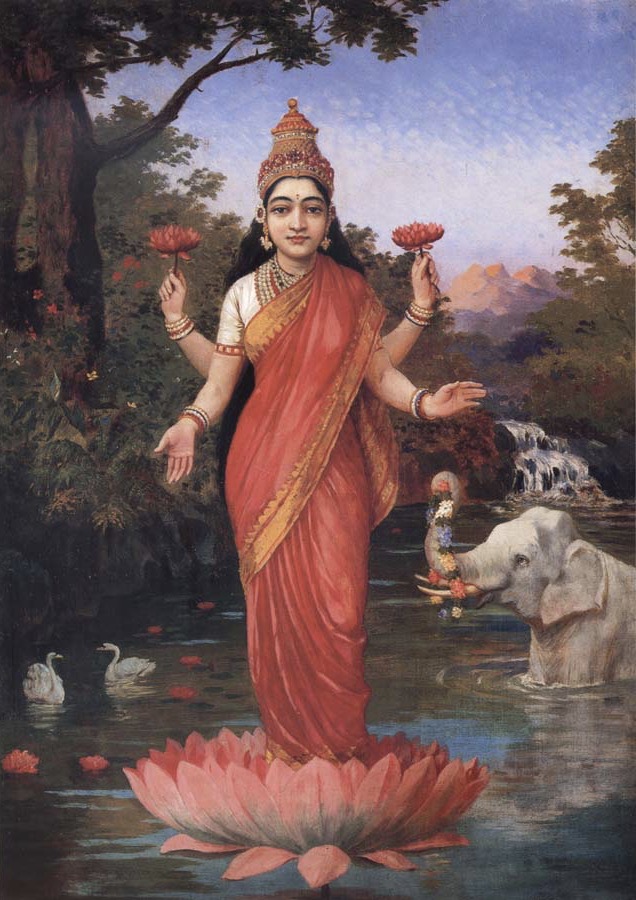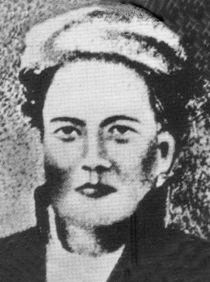|
Kanakasooriya Singaiariyan
Kanakasooriya Cinkaiariyan (died 1478) was the first of the Aryacakravarti dynasty kings of Jaffna Kingdom to lose complete power to a rival king. He inherited the throne from his father Gunaveera Cinkaiariyan in 1440. He was deposed in 1450 by Sapumal Kumaraya a military leader sent by Parakramabâhu VI from the rival Kotte Kingdom in the south. Number of primary sources such as '' Rajavaliya'' and '' Kokila Sandesa'' written in Sinhalese vividly describe the planning and conquest of the Jaffna Kingdom. Kanakasooriya escaped to Madurai in South India with his two sons. Sapumal Kumaraya ruled Jaffna Kingdom as a sub king and even minted coins in the tradition of Setu coins Setu coins or Setu bull coins are found in large quantities in the northern part of Sri Lanka and in Southern India. Codrington in his book ''Ceylon Coins and Currency'' published in 1924 and Mitchiner in his book ''Oriental Coins'' published in 1 ..., the native coins of Jaffna Kingdom. After the death ... [...More Info...] [...Related Items...] OR: [Wikipedia] [Google] [Baidu] |
Jaffna Kingdom
The Jaffna Kingdom ( ta, யாழ்ப்பாண அரசு, si, යාපනය රාජධානිය; 1215–1624 CE), also known as Kingdom of Aryachakravarti, was a historical kingdom of what today is northern Sri Lanka. It came into existence around the town of Jaffna on the Jaffna peninsula and was traditionally thought to have been established after the invasion of Kalinga Magha from Kalinga in India.Nadarajan, V. ''History of Ceylon Tamils'', p. 72Indrapala, K. ''Early Tamil Settlements in Ceylon'', p. 16 Established as a powerful force in the north, northeast and west of the island, it eventually became a tribute-paying feudatory of the Pandyan Empire in modern South India in 1258, gaining independence when the last Pandyan ruler of Madurai was defeated and expelled in 1323 by Malik Kafur, the army general of the Delhi Sultanate. For a brief period in the early to mid-14th century it was an ascendant power in the island of Sri Lanka, to which all regional ki ... [...More Info...] [...Related Items...] OR: [Wikipedia] [Google] [Baidu] |
Setu Coins
Setu coins or Setu bull coins are found in large quantities in the northern part of Sri Lanka and in Southern India. Codrington in his book ''Ceylon Coins and Currency'' published in 1924 and Mitchiner in his book ''Oriental Coins'' published in 1978 have clearly pointed out that the traditional design of Sri Lanka standing King Type Copper Massa (coins) of the Jaffna Kingdoms belongs to the Aryacakravarti dynasty from 1284 AD to 1410 AD. Setu coins were previously attributed to the Setupati Princes of Ramanathapuram in South India. There are two series one in the issued from the 13th to the 15th centuries and the other after the brief loss of sovereignty to the rival Kotte kingdom from 1450 to 1467 and reconstitution of the Kingdom. Even during the rule of Sapumal Kumaraya coins were issued in Jaffna that was distinct. Three types of this series are illustrated below. The obverse of these coins have a human figure flanked by lamps and the reverse has the Nandi (bull) symbol, the l ... [...More Info...] [...Related Items...] OR: [Wikipedia] [Google] [Baidu] |
Sri Lankan Tamil Royalty
Shri (; , ) is a Sanskrit term denoting resplendence, wealth and prosperity, primarily used as an honorific. The word is widely used in South and Southeast Asian languages such as Marathi, Malay (including Indonesian and Malaysian), Javanese, Balinese, Sinhala, Thai, Tamil, Telugu, Hindi, Nepali, Malayalam, Kannada, Sanskrit, Pali, Khmer, and also among Philippine languages. It is usually transliterated as ''Sri'', ''Sree'', ''Shri'', Shiri, Shree, ''Si'', or ''Seri'' based on the local convention for transliteration. The term is used in Indian subcontinent and Southeast Asia as a polite form of address equivalent to the English "Mr." in written and spoken language, but also as a title of veneration for deities or as honorific title for local rulers. Shri is also another name for Lakshmi, the Hindu goddess of wealth, while a ''yantra'' or a mystical diagram popularly used to worship her is called Shri Yantra. Etymology Monier-Williams Dictionary gives the meaning of the ... [...More Info...] [...Related Items...] OR: [Wikipedia] [Google] [Baidu] |
Sri Lankan Hindus
Shri (; , ) is a Sanskrit term denoting resplendence, wealth and prosperity, primarily used as an honorific. The word is widely used in South and Southeast Asian languages such as Marathi, Malay (including Indonesian and Malaysian), Javanese, Balinese, Sinhala, Thai, Tamil, Telugu, Hindi, Nepali, Malayalam, Kannada, Sanskrit, Pali, Khmer, and also among Philippine languages. It is usually transliterated as ''Sri'', ''Sree'', ''Shri'', Shiri, Shree, ''Si'', or ''Seri'' based on the local convention for transliteration. The term is used in Indian subcontinent and Southeast Asia as a polite form of address equivalent to the English "Mr." in written and spoken language, but also as a title of veneration for deities or as honorific title for local rulers. Shri is also another name for Lakshmi, the Hindu goddess of wealth, while a ''yantra'' or a mystical diagram popularly used to worship her is called Shri Yantra. Etymology Monier-Williams Dictionary gives the meaning of ... [...More Info...] [...Related Items...] OR: [Wikipedia] [Google] [Baidu] |
Kings Of Jaffna
Kings or King's may refer to: *Monarchs: The sovereign heads of states and/or nations, with the male being kings *One of several works known as the "Book of Kings": **The Books of Kings part of the Bible, divided into two parts **The ''Shahnameh'', an 11th-century epic Persian poem **The Morgan Bible, a French medieval picture Bible **The Pararaton, a 16th-century Javanese history of southeast Asia *The plural of any king Business * Kings Family Restaurants, a chain of restaurants in Pennsylvania and Ohio *Kings Food Markets, a chain supermarket in northern New Jersey * King's Favourites, a brand of cigarettes *King's Variety Store, a chain of stores in the USA *King's (defunct discount store), a defunct chain of discount stores in the USA Education *King's College (other), various colleges * King's School (other), various schools * The King's Academy (other), various academies Electoral districts * King's (New Brunswick electoral district) (1867–1 ... [...More Info...] [...Related Items...] OR: [Wikipedia] [Google] [Baidu] |
1478 Deaths
Year 1478 ( MCDLXXVIII) was a common year starting on Thursday (link will display the full calendar) of the Julian calendar. Events January–December * January 14 – Novgorod surrenders to Ivan III, Grand Prince of Moscow. * January 15 – Richard of Shrewsbury, Duke of York is married to Anne de Mowbray, 8th Countess of Norfolk. * February 18 – George Plantagenet, 1st Duke of Clarence, convicted of treason against his older brother Edward IV of England, is privately executed in the Tower of London. * April 26 – The Pazzi Family attacks Lorenzo de' Medici, and kills his brother Giuliano, during High Mass in Florence Cathedral. * May 14 – The Siege of Shkodra, Albania begins. * November – Eskender succeeds his father Baeda Maryam, as Emperor of Ethiopia, at the age of six. * November 1 – The Spanish Inquisition begins. * December 28 – Battle of Giornico: Swiss troops defeat the Milanese. Date unknown * Grand Duchy of Mo ... [...More Info...] [...Related Items...] OR: [Wikipedia] [Google] [Baidu] |
Gunaveera Cinkaiariyan
Gunaveera Cinkaiariyan ( ta, குணவீர சிங்கையாரியன்) was an Aryacakravarti The Arya Chakravarti dynasty ( ta, ஆரியச் சக்கரவர்த்திகள் வம்சம், Sinhalese language, Sinhalese: ආර්ය චක්රවර්තී රාජවංශය) were kings of the Jaffna ... king of the Jaffna Kingdom. Local sources say that he ruled Jaffna from 1414 or 1417. After his reign, his son Kanakasooriya Cinkaiariyan ruled the Jaffna kingdomயாழ்ப்பாண வைபவமாலை Notes References Yalpana Vaipava Malai {{DEFAULTSORT:Cinkaiariyan, Gunaveera Kings of Jaffna Sri Lankan Tamil royalty ... [...More Info...] [...Related Items...] OR: [Wikipedia] [Google] [Baidu] |
Johor Bahru
Johor Bahru (), colloquially referred to as JB, is the capital city of the state of Johor, Malaysia. It is located at the southern end of Peninsular Malaysia,along the north bank of the Straits of Johor, opposite of the city-state Singapore. The city has a population of 1,711,191 people within an area of 220 km2. Johor Bahru is adjacent to the city of Iskandar Puteri and Pasir Gudang, together with their surrounding areas anchoring Malaysia's second largest urban agglomeration, Iskandar Malaysia, with a population of 2,500,000. Johor Bahru was founded in 1855 as Tanjung Puteri when the Sultanate of Johor came under the influence of Temenggong Daeng Ibrahim. The area was renamed "Johore Bahru" in 1862 and became the capital of the Sultanate when the Sultanate administration centre was moved there from Telok Blangah, which is today located within southern Singapore. Johor Bahru serves as one of the two land border connections on the Malaysian side between the countries of S ... [...More Info...] [...Related Items...] OR: [Wikipedia] [Google] [Baidu] |
Bhuvanaikabahu VI Of Kotte
Bhuvanekabahu VI of Kotte (, ), also known as Sapumal Kumaraya and Chempaka Perumal, was an adopted son of Parakramabahu VI, whose principal achievement was the conquest of Jaffna Kingdom in 1447 or 1450.Gnanaprakasar, S ''A critical history of Jaffna'', p.103 Bhuvanaikabahu was apparently summoned south after the demise of his adopted father. He then ruled for 17 years. According to ''Rajavaliya'', he killed the grandson of Parakrama Bahu VI, namely Vira Parakrama Bahu or Jaya Bahu (1468 – c. 1470). Do Couto, however, who was well-informed, says after a few years' reign the king died and his half-witted son was put on the throne by his aunt, who two years later finding herself unable to rule sent for Sapumal Kumaraya from Jaffna. Origin theories There are number of theories as to his ethnic origin and the reason for the rebellion against his rule. According to John Holt, he was an ethnic Tamil from the eastern part of the island, whereas other sources say that he may have c ... [...More Info...] [...Related Items...] OR: [Wikipedia] [Google] [Baidu] |
Nallur (Jaffna)
Nallur ( ta, நல்லூர்; si, නල්ලූර් ) is an affluent suburb in Jaffna, Sri Lanka. It is located 3 km south from Jaffna city centre. Nallur is most famous for Nallur Kandaswamy temple, one of Sri Lanka's most sacred place of pilgrimage for Sri Lankan Hindus. Nallur is also famous for being the historical capital of the old Jaffna Kingdom and birthplace of renowned philosopher and theologian, Arumuka Navalar. Etymology The name Nall-ur was colloquially used by natives in Jaffna to refer to the town as the 'place of high castes'.Pon Kulendiren’s‘Hinduism a Scientific Religion, & Some Temples in Sri Lanka’, page 154 The first part of the word Nallur ( ''Nall'' ) derives from the Tamil word ‘''Nalla''’ which means 'good'. In the past, it was Tamil linguistic tradition to refer to somebody of a higher or more socially upward caste as 'Nalla akkal' (good people). The second part to the name ( ''Ur'' ) means place or region. This loosely used ... [...More Info...] [...Related Items...] OR: [Wikipedia] [Google] [Baidu] |
South India
South India, also known as Dakshina Bharata or Peninsular India, consists of the peninsular southern part of India. It encompasses the Indian states of Andhra Pradesh, Karnataka, Kerala, Tamil Nadu, and Telangana, as well as the union territories of Lakshadweep and Puducherry, comprising 19.31% of India's area () and 20% of India's population. Covering the southern part of the peninsular Deccan Plateau, South India is bounded by the Bay of Bengal in the east, the Arabian Sea in the west and the Indian Ocean in the south. The geography of the region is diverse with two mountain ranges – the Western and Eastern Ghats – bordering the plateau heartland. The Godavari, Krishna, Kaveri, Tungabhadra, Periyar, Bharathappuzha, Pamba, Thamirabarani, Palar, and Vaigai rivers are important perennial rivers. The majority of the people in South India speak at least one of the four major Dravidian languages: Tamil, Telugu, Malayalam and Kannada (all 4 of which are among the 6 Classic ... [...More Info...] [...Related Items...] OR: [Wikipedia] [Google] [Baidu] |
.png)


